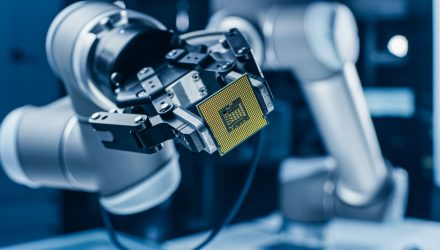Intel, an American computer chip manufacturer, has set sights on completely reinventing components of computer chip manufacturing to meet its net-zero emissions goals by 2040, reported the Wall Street Journal.
Current productions of semiconductor chips, a vital component for many industries, require the use of heavy emitting chemicals, and as demand has soared for its products, so too have emissions for the company. Intel has taken major steps to reduce and offset its direct emissions through efficiency gains and increasing its use of renewable energy.
These steps have equated to a 75% reduction in what emissions would otherwise have been, but now the major chipmaker has its eyes on completely revamping the chip manufacturing process, going back to the drawing board to try and find alternative methods that would reduce emissions released during manufacturing.
“We need to look fundamentally at the chemistry and if we can come up with completely new chemistries that have zero global warming potential,” said Todd Brady, chief sustainability officer at Intel. “It will be a big, big change.”
Intel is looking to establish a research-and-development project that will span industries in its pursuit of redefining chip manufacturing. Current processes require the use of chemicals that emit much stronger greenhouse gases than carbon dioxide, called perfluorocarbons, and are between 6,500-9,200 more caustic and potent than carbon dioxide, according to the U.S. Environmental Protection Agency.
Emissions from these chemicals were the primary driver for Intel’s direct greenhouse-gas emissions in 2020, making up nearly half of its footprint for these direct emissions, totaling 1.97 million metric tons of CO2.
“Semiconductor companies must continue pushing sustainability considerations early in the design of each technology,” said Peter Hanbury, head of Americas manufacturing practice at Bain and Co. “It’s much easier to insert these new approaches and techniques early when designing a new process than it is to retrofit.”
Investing in Intel’s Potential for Industry Disruption
If Intel can succeed in finding an emissions-friendly alternative to semiconductor chip manufacturing, it could disrupt and revolutionize the industry.
“My take is: The innovation continues,” Brady said. “We have brilliant engineers and scientists who find novel ways to keep the efficiency going.”
For investors looking for access to Intel and companies like it that are working to reduce emissions and increase sustainability, Index IQ offers two funds with Intel as a holding.
The IQ Cleaner Transport ETF (CLNR) provides an investment opportunity within the emissions transition of the transportation sector. CLRN seeks to give investors exposure to global companies focused on clean energy resources, transportation equipment and services, technology that makes transportation more efficient, and infrastructure components.
CLNR is a dual impact fund in that it has aligned with the National Wildlife Federation and donates a portion of CLNR’s management fees to the organization.
Intel is carried at a 3.1% weight within CLNR, and the fund has an expense ratio of 0.45%.
The IQ Clean Oceans ETF (OCEN) invests in the blue economy, which is estimated to be worth roughly $2.5 trillion annually and is anticipated to grow twice as fast as the mainstream economy by 2030. OCEN seeks to offer exposure to companies involved in pollution reduction, carbon efficiency, clean energy, sustainable oceans, or cleaner shipping.
OCEN was developed in alignment with Oceana and contributes a portion of its management profits to Oceana, the largest international advocacy organization to focus on ocean conservation.
Intel is carried at a 3.1% weight within OCEN, and the fund has an expense ratio of 0.45%.
For more news, information, and strategy, visit the Dual Impact Channel.
